

This website uses cookies to improve the user experience. We use cookies in accordance with our NRMA Group Cookie Policy.
This website uses cookies to improve the user experience. We use cookies in accordance with our NRMA Group Cookie Policy.
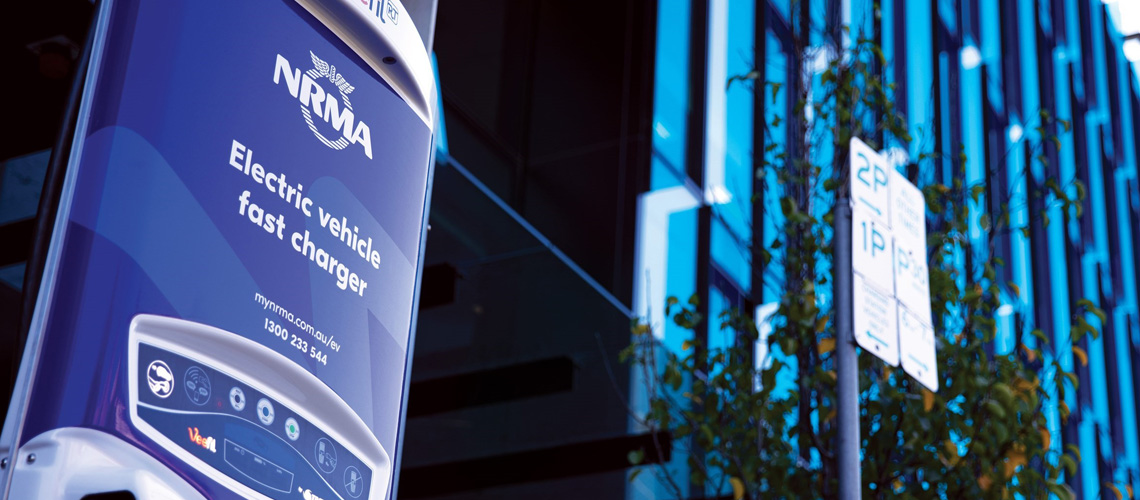
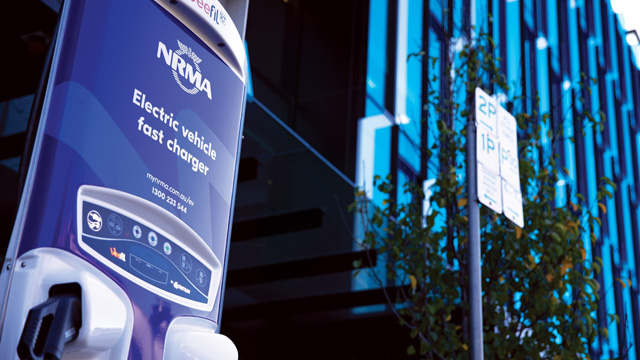
In April, the federal government announced it would invest $78.6 million into a partnership program with the NRMA to design and build a national electric vehicle charging network.
The new network, which is just part of a whole new EV charging “ecosystem” being planned by NRMA, will see at least 117 new jointly-funded EV ultra-fast-charging sites strategically placed along major highway routes throughout Australia.
Adding to an existing and planned network of sites in NSW and Queensland, the national network will allow EV drivers to circumnavigate the country as well as drive right through the red centre.
Where and why locations are decided upon are based on a few factors, which are outlined in detail below.
They include balancing coverage and capacity by bolstering first-gen charging networks and targeting population centres and natural traffic flows, all the while maintaining optimum distances between sites and enhancing amenities to ensure a comfortable driving experience.
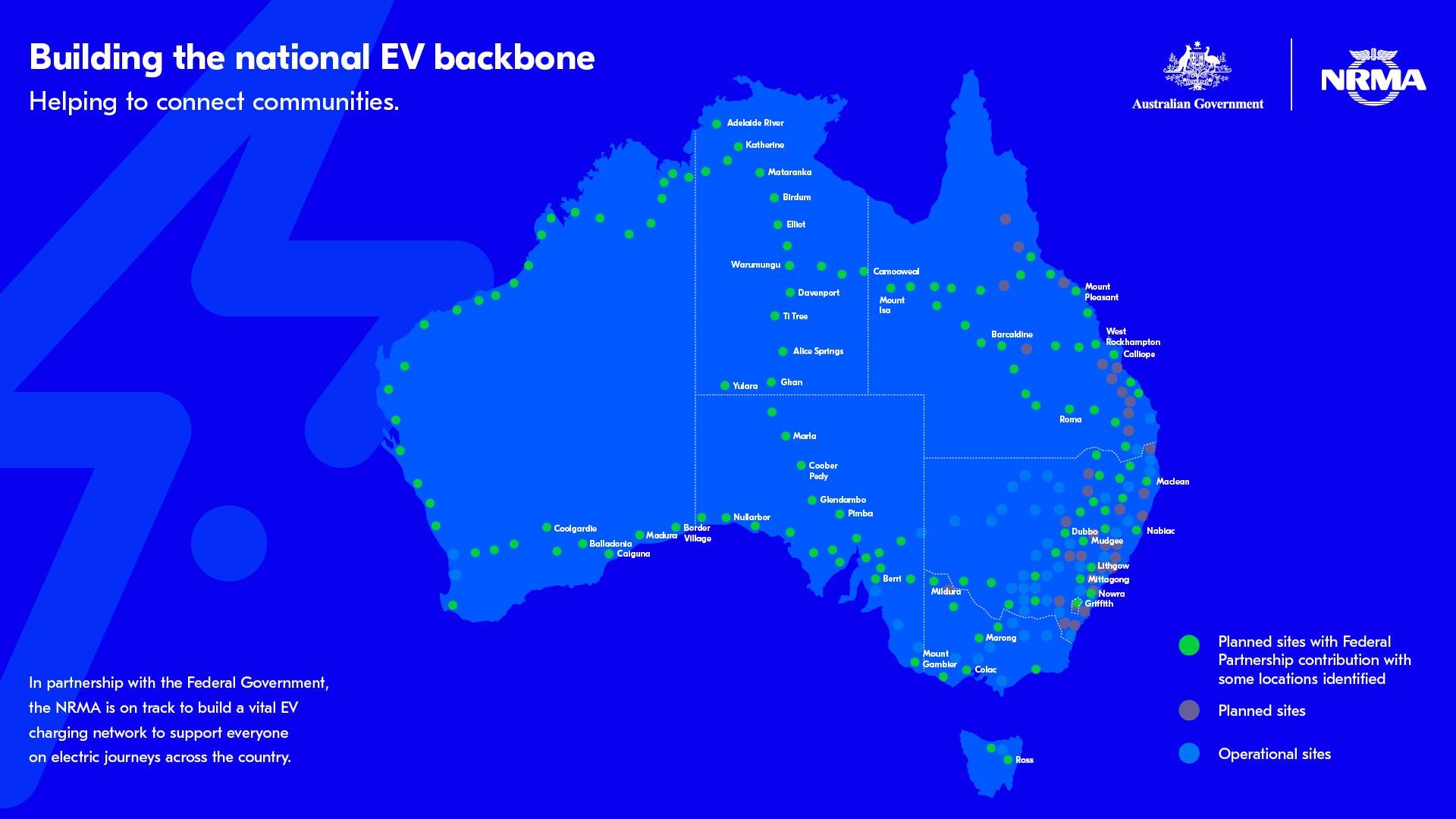
The network aims to strike a balance between providing coverage in areas that are currently lacking, and increasing capacity in areas where existing infrastructure is insufficient to handle the projected traffic flows and congestion.
Indeed, most EV drivers today have experienced some sort of inconvenience or queuing in popular locations due to lack of infrastructure.
The NRMA recognises EV drivers will continue to experience challenges when charging on the road if its first-generation technology is not upgraded to faster, more robust hardware.
To address this, NRMA Electric is tasked with focusing on population centres of at least 10,000 people and most-travelled routes between them, in areas where the demand for charging stations will be highest.
This means that while some areas will see new charging stations where none existed before, others will see additional stations added to existing ones to handle increased demand.
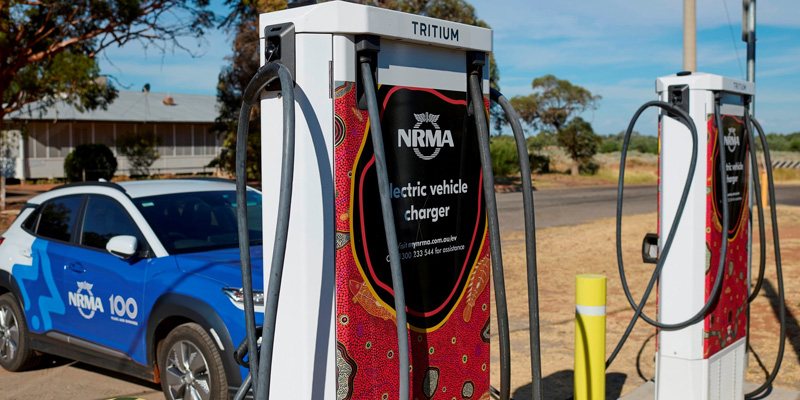
And, some charging installations will address less-travelled routes where it just isn’t viable for commercial networks. By investing in these black spot destinations now, the program ensures regional communities are not the last to receive critical infrastructure, but also means they are connected from the outset to future transportation networks.
Many of these locations will be off-grid or are in known telecommunication and power “black spots,” so NRMA will also invest in battery storage and solar to keep outback EV drivers powering along.
Certain existing charger sites, such as in NSW and Queensland, are first-generation networks largely composed of single fast chargers. Given the increase in EV sales and the resulting increases in EV traffic, it won’t be long before these single charger sites are not enough to keep people moving efficiently.
In fact, some sites are most certainly already at capacity, especially during holiday periods.
In an ideal world under the national program, there would be a perfect 150-kilometre spacing between charging stations, but this is not always practically achievable.
The NRMA Electric team wants to provide an optimum experience for its members, so is looking for locations that will offer EV drivers more than just a top-up for their vehicle when they stop to charge.
Yes, this means levelling up amenities where possible at its new charging sites. This includes adding security cameras and lighting, as well as basic amenities like shelter, shade and toilets where possible.
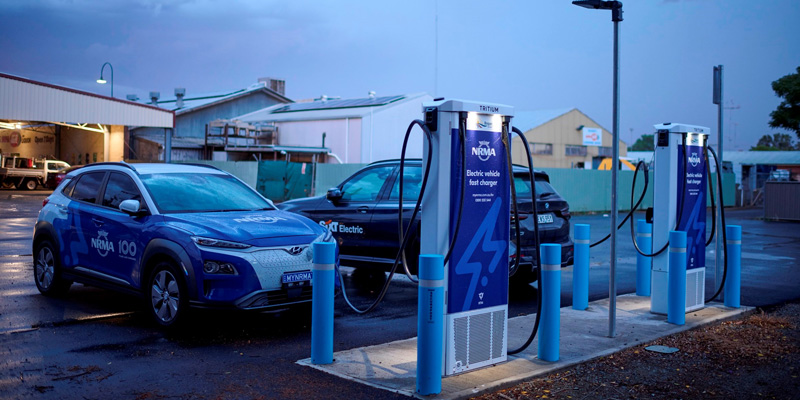
Ideally, the NRMA would love to provide a consistent level of experience at each new site. For this reason, the distance between two chargers may be a bit longer than the stipulated 150 kilometres if a site a little further away can provide better amenities.
This may not always be possible at more remote sites. However, the NRMA wants to ensure that nobody is left behind and will make sure that the distance between sites doesn’t disadvantage those driving shorter-range modern EVs.
The new network will be a major upgrade compared to its first-generation NSW network.
While the NSW EV charging network consists of single 50kW chargers, the standard layout for the new network sites will consist of four charging bays, boasting a total charging capacity of 300 kilowatts.
This means significantly more juice available per site as well as per charger, meaning extra availability for more drivers.
The NRMA is currently considering the installation of two charging units, each capable of concurrent charging, with power that can be dynamically distributed across the four bays.
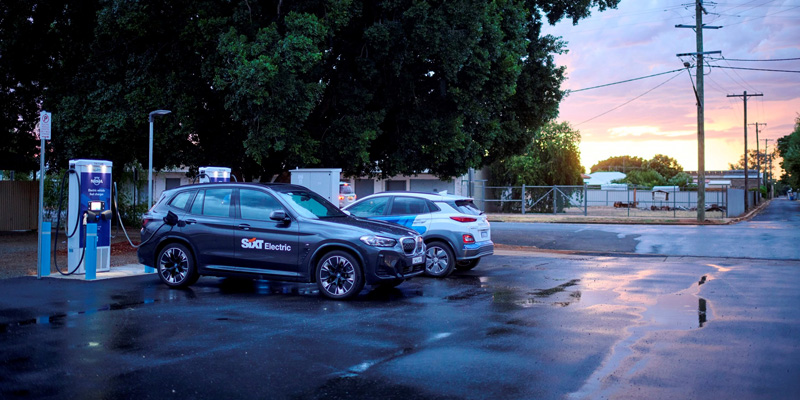
This basic blueprint aims to ensure uniformity across all locations. This way, EV drivers will know what they can expect at each charging location.
In addition to upgraded hardware on-site, the NRMA is also introducing a new app-based charging experience. This will enable drivers to view real-time availability and status at charging locations.
In short: the NRMA's strategic approach to expanding its EV charging network aims to balance coverage and capacity, enhance amenities, and introduce next-generation EV charging technology for a seamless charging experience, thereby paving the way for a more sustainable and accessible future of transportation in Australia.